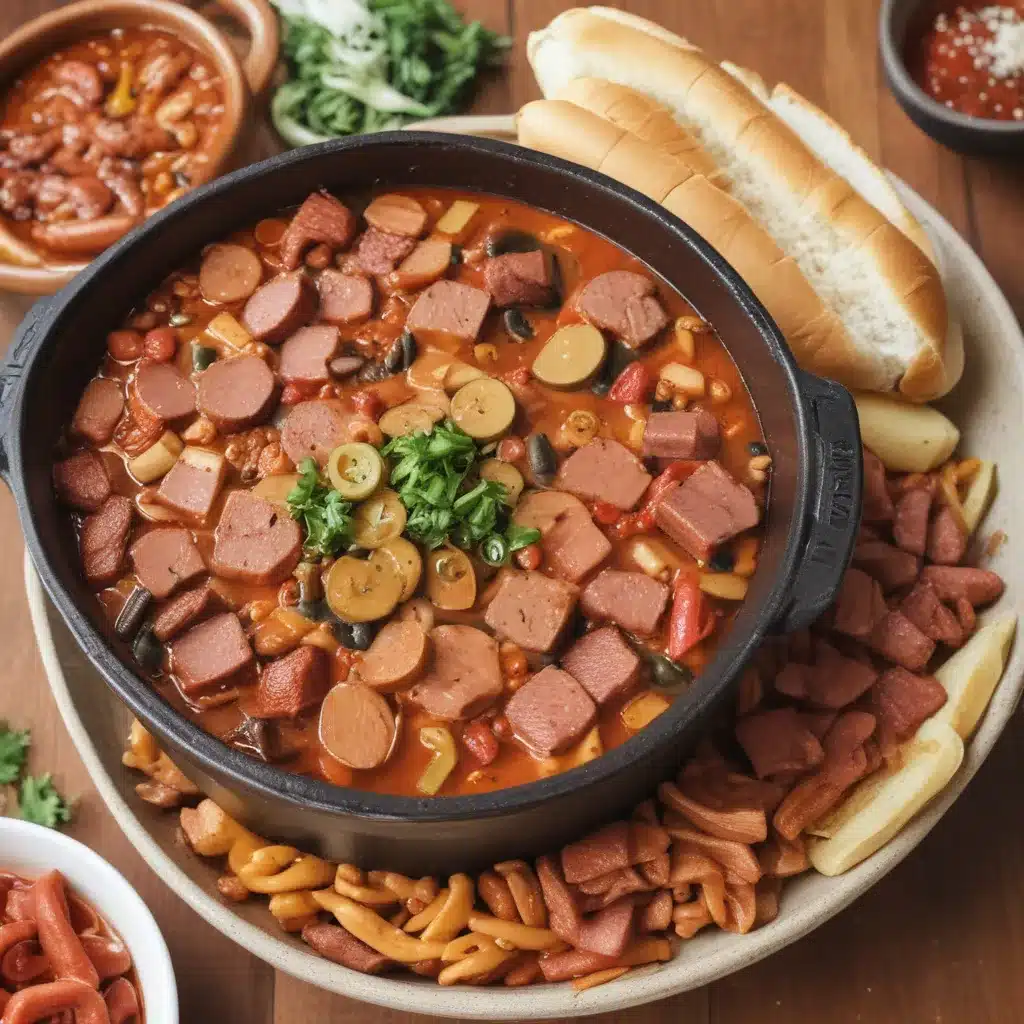
Uncovering the Intriguing History and Flavors of Budae Jjigae
As I step through the doors of Korean Garden, the aroma of simmering stew and sizzling meats immediately envelops me. I’m here to explore the fascinating world of budae jjigae, a uniquely Korean dish with a captivating backstory. What intrigues me most is how this “army base stew” managed to transcend its humble origins to become a beloved culinary icon.
Tracing the Humble Beginnings of Budae Jjigae
The origins of budae jjigae can be traced back to the Korean War, a time of great hardship and scarcity. During this period, resourceful Koreans living near American military bases began supplementing their limited food supplies with ingredients sourced from the bases, such as SPAM, hot dogs, and American cheese. These readily available, albeit unconventional, ingredients were combined with traditional Korean staples like kimchi, scallions, and gochujang (Korean chili paste) to create a hearty, flavor-packed stew.
Interestingly, the name “budae jjigae” itself is a testament to these humble beginnings. “Budae” translates to “army base,” while “jjigae” means “stew” – a clear nod to the dish’s origins in the proximity of American military installations. It was a pragmatic solution to the challenges of the war, born out of necessity and ingenuity.
Embracing the Melting Pot of Flavors
As I ponder the history, I can’t help but marvel at the way budae jjigae seamlessly blends Korean and American culinary influences. The fusion of spicy, savory, and umami flavors creates a truly unique and captivating taste experience. The SPAM and hot dogs, once considered foreign and even taboo ingredients, have now become an integral part of the dish’s identity.
What I find particularly intriguing is how budae jjigae has evolved over time, with different regions and households putting their own spin on the recipe. Some may opt for a more traditional, kimchi-centric version, while others might experiment with additional protein sources like pork belly or sausage. The versatility of the dish allows for endless variations, each one offering a distinct flavor profile.
Savoring the Vibrant Flavors of Budae Jjigae
As I take my first bite of the steaming hot stew, my senses are immediately awakened. The spicy gochujang provides a delightful kick, while the salty SPAM and juicy hot dogs add depth and heartiness to the broth. The simmered kimchi lends a tangy, fermented note that perfectly balances the rich, umami flavors.
What truly surprises me, however, is the way the different ingredients work together in harmony. The stew is a symphony of textures, with the tender beef, the crisp vegetables, and the soft, pillowy rice cakes all contributing to a truly satisfying mouthfeel.
Sharing the Joy of Budae Jjigae
As I savor each spoonful, I can’t help but feel a sense of culinary camaraderie. Budae jjigae is not just a dish; it’s a testament to the resilience and adaptability of the Korean people. It’s a story of how they turned adversity into deliciousness, creating a unique culinary fusion that has captured the hearts and taste buds of people around the world.
I imagine the joy and comfort this stew must have brought to those who first created it during the war, and how it continues to bring people together today. Whether shared with family, friends, or even strangers, budae jjigae is a unifying force that transcends cultural boundaries.
Exploring the Versatility of Budae Jjigae
One of the things I admire most about budae jjigae is its incredible versatility. While the core ingredients – kimchi, SPAM, hot dogs, and gochujang – remain the foundation, the dish can be adapted to suit a wide range of preferences and dietary needs.
For the vegetarians and vegans out there, the stew can be easily modified by omitting the meat and substituting plant-based protein sources, such as tofu or seitan. The umami-rich broth and vibrant flavors of the kimchi and gochujang are more than enough to satisfy the palate.
On the other hand, for those with heartier appetites, budae jjigae can be transformed into a veritable feast. By adding additional proteins like beef, pork, or seafood, the dish becomes a veritable cornucopia of flavors and textures.
Celebrating the Enduring Legacy of Budae Jjigae
As I reflect on my culinary journey with budae jjigae, I’m struck by the way this humble dish has transcended its wartime origins to become a beloved and iconic part of Korean cuisine. It’s a testament to the resilience, creativity, and culinary ingenuity of the Korean people.
Today, budae jjigae can be found in restaurants and homes across Korea, and its popularity has even spread to the global stage. It’s a dish that continues to captivate and delight, reminding us that the most delicious and enduring culinary creations often arise from the most unexpected and challenging circumstances.
So, if you’re ever in the mood for a truly unique and unforgettable culinary experience, I encourage you to step into the vibrant world of budae jjigae. Prepare your taste buds for a flavor explosion that celebrates the rich tapestry of Korean and American influences, and let the comforting warmth of this stew transport you to a time and place where resilience and creativity gave birth to a true culinary masterpiece.
And if you’re in the Boston area, be sure to visit Korean Garden to indulge in their version of this remarkable dish. Trust me, it’s an experience you won’t soon forget.
